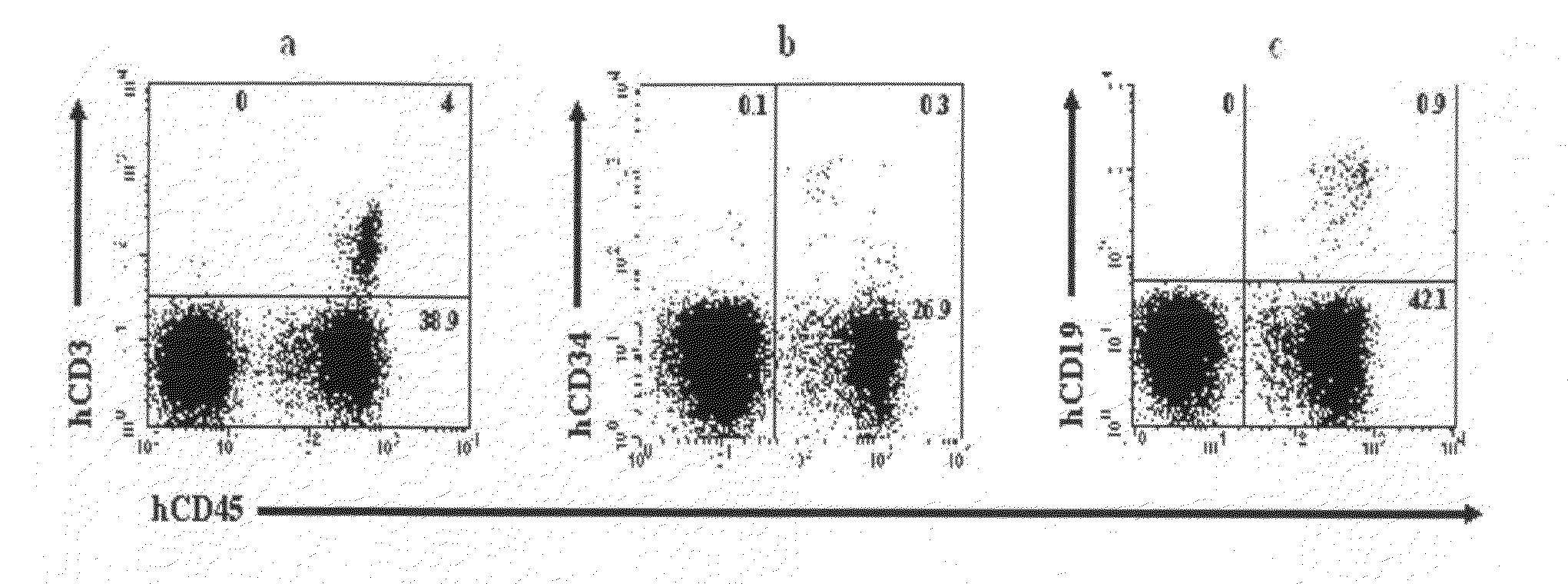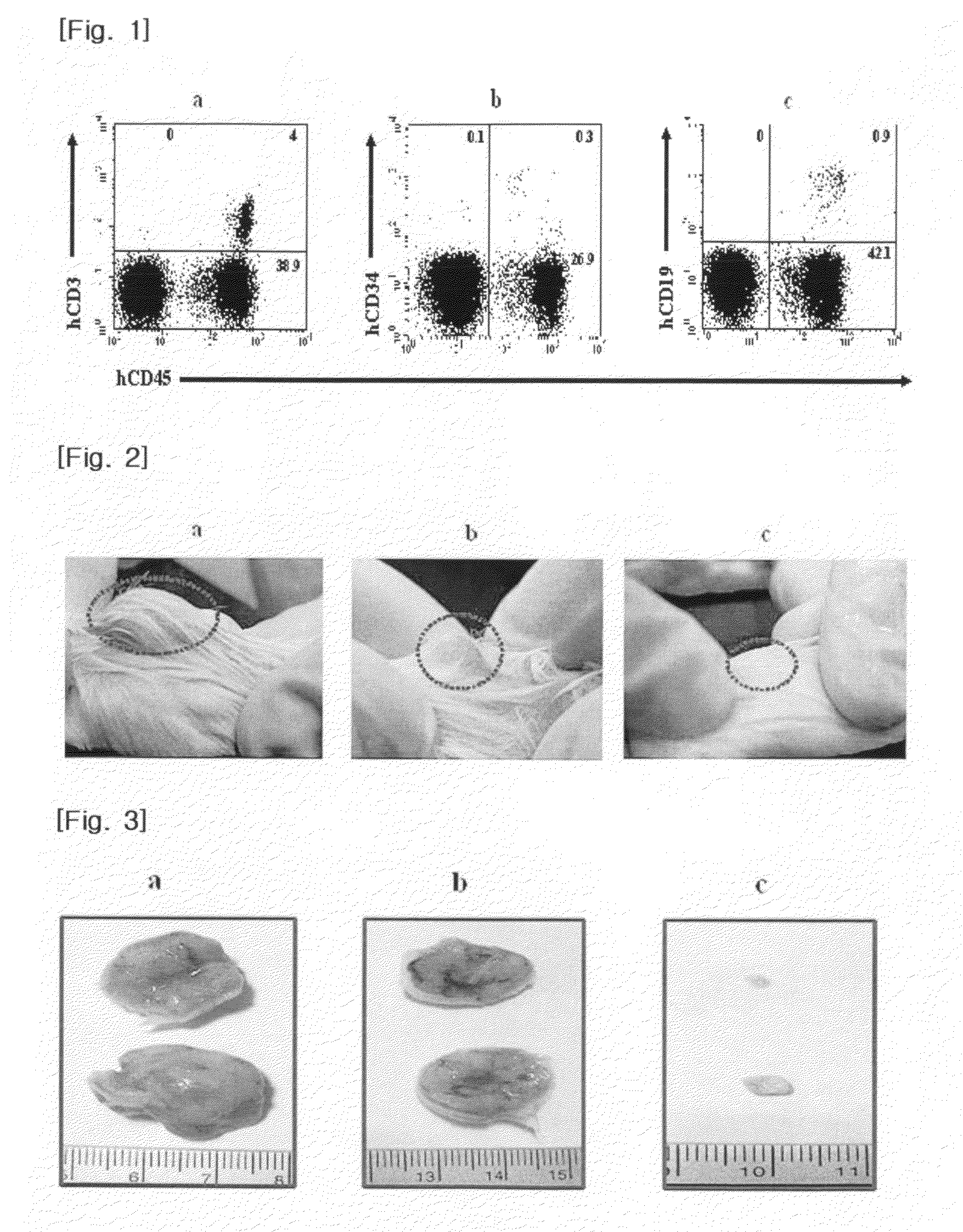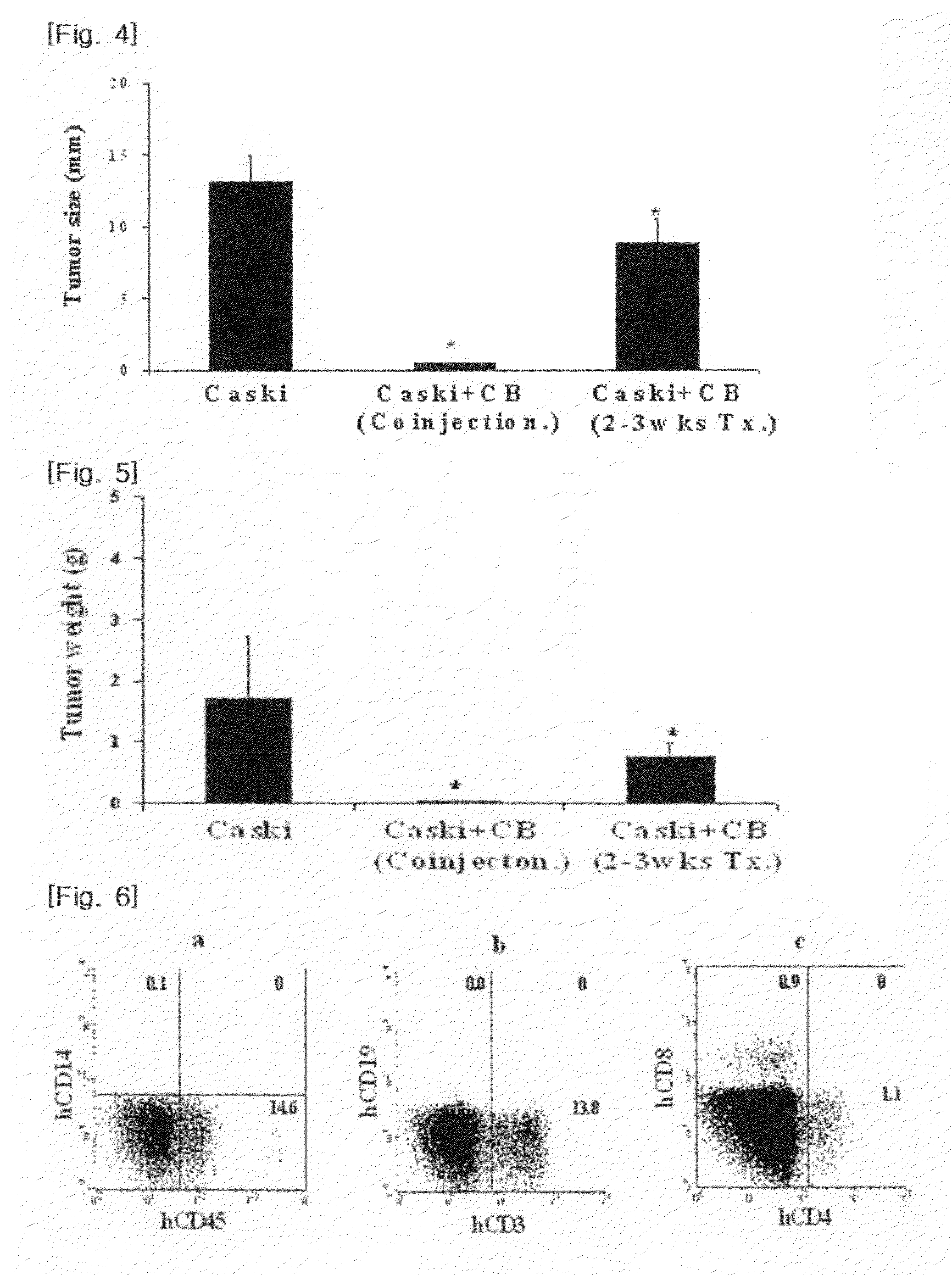Composition for in vivo transplantation for treatment of human cervical cancer comprising mononuclear cells derived from umbilical cord blood
a technology of umbilical cord blood and mononuclear cells, which is applied in the direction of antineoplastic agents, medical preparations, unknown materials, etc., can solve the problems of inability to fundamentally treat cancer, the risk of recurrence is remarkably increased due to residual cancer cells, and the above-methods have a very low therapeutic effect, so as to achieve good regenerative potential of hematopoietic cells and low graft-versus-host (
- Summary
- Abstract
- Description
- Claims
- Application Information
AI Technical Summary
Benefits of technology
Problems solved by technology
Method used
Image
Examples
example 1
Culture of Human Cervical Cancer Cells
[0026]Caski cells (Korean Cell Line Bank, Cat. NO. 21550), which were cells derived from patients with cervical cancer, were cultured in RPMI (Rosewell Park Memorial Institute, Gibco-BRL, Korea) supplemented with 10% fetal bovine serum (FBS, Jeil Biotech Services), 0.25 M HEPES (N-2-hydroxyethyl-piperazine-N′-2-ethane-sulfonic acid), and 1% penicillin and streptomycin.
example 2
Isolation of Mononuclear Cells from Umbilical Cord Blood
[0027]Umbilical cord blood treated with an anticoagulant (heparin) was added to a 50 ml Falcon tube containing 20 ml of a Ficoll-Paque solution (Amersham Biosciences AB, Sweden), and the mixture was then centrifuged at 2000 rpm at room temperature for 20 minutes. A mononuclear cell fraction of the middle layer was collected, diluted with a 2-fold volume of a phosphate buffered saline (PBS), centrifuged at room temperature for five minutes for washing.
[0028]The mononuclear cells thus-obtained were stained with an anti-CD34 antibody which is a stem cell-specific antibody, anti-CD3 and anti-CD19 antibodies which are immune cell-specific antibodies, and an anti-CD45 antibody which is an antibody against CD45 which is expressed in whole mononuclear hematopoietic cells, for 30 minutes, and PBS (D-phosphate buffered saline) was then added thereto. The mixture was centrifuged at 1500 rpm for 5 minutes to remove antibodies that did not ...
example 3
Establishment of Experimental Animal Models and In Vivo Transplantation of Mononuclear Cells Derived from Umbilical Cord Blood
[0030]NOD-SCID mice (6-8 weeks old) were divided into three groups of 5 mice each.
[0031]For the first group, the Caski cells obtained in Example 1 (2×106 cells / mouse) in physiological saline were transplanted into the subcutaneous tissues of the NOD-SCID mice using a 1 ml syringe. For the second group, the Caski cells obtained in Example 1 (2×106 cells / mouse) in physiological saline were transplanted into the subcutaneous tissues of the NOD-SCID mice using a 1 ml syringe, and incubated for about two-three weeks to form cervical tumors. Then, the mononuclear cells obtained in Example 2 (2×107 cells / mouse) were transplanted into the tumor sites of the mice in the same manner as above. For the third group, the Caski cells (2×106 cells / mouse) and the mononuclear cells obtained in Example 2 (2×107 cells / mouse) were transplanted into the subcutaneous tissues of the...
PUM
 Login to View More
Login to View More Abstract
Description
Claims
Application Information
 Login to View More
Login to View More - R&D
- Intellectual Property
- Life Sciences
- Materials
- Tech Scout
- Unparalleled Data Quality
- Higher Quality Content
- 60% Fewer Hallucinations
Browse by: Latest US Patents, China's latest patents, Technical Efficacy Thesaurus, Application Domain, Technology Topic, Popular Technical Reports.
© 2025 PatSnap. All rights reserved.Legal|Privacy policy|Modern Slavery Act Transparency Statement|Sitemap|About US| Contact US: help@patsnap.com



